Waterfall
In November 2021 I visited a local waterfall which was, at least at that season, wonderfully monochrome. It wasn't a famous waterfall. And it was spatially complicated. There was no one obvious perspective from which to photograph it.
At the time I'd spent about half a year walking on a path through a short patch of woods. The results of this, so far as remarkable photographs, had been a bit thin. During certain weeks, enough water went pouring over some rocks to make a cascade that was just about a foot high. The images I made of that were the most interesting. But yet, they were still a bit underwhelming, and visually too loose for my taste. A friend called this my Spinal Tap miniature Stonehenge moment.
I'd always believed that if one shows up seriously, that there can be nothing there (as Eggleston writes), yet there can still be a photograph there. But what about showing up when there is something there? Surely that could be a route forward as well.
So I started photographing at the local monochrome waterfall. Even though the water had a substantial (and unusually wide) drop, it was still an obscure and out-of-the-way place. Not exactly a destination waterfall. So I could keep some indie cred.
Of course, when one revisits a place, things change. Not just that on cold days, the spray from the waterfall would freeze the surroundings into their own little microclimate. Or that after heavy rains the waterfall would turn torrential. But also how the humans came and went. On April 1, fishing season opened. After months of my being the only one present, that morning there were dozens of men in camouflage waders out with their rods, while two friendly folks in an ATV zipped around selling breakfast sandwiches. What could be more fine?


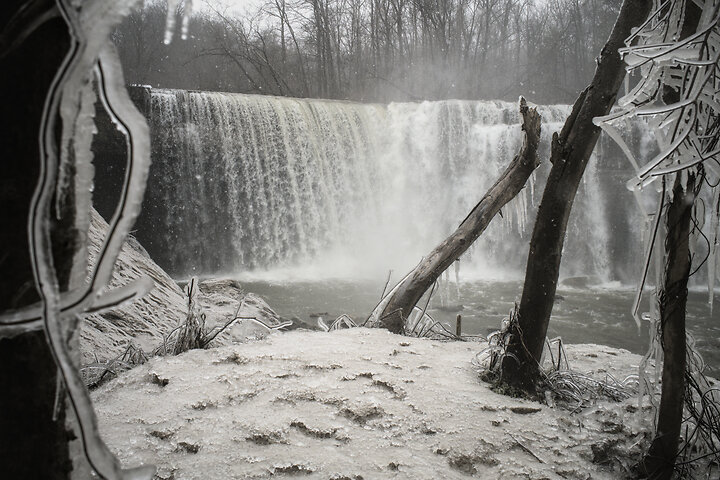

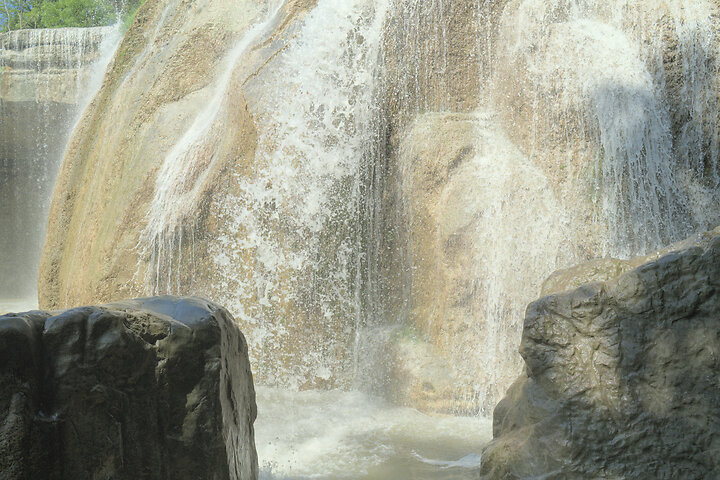



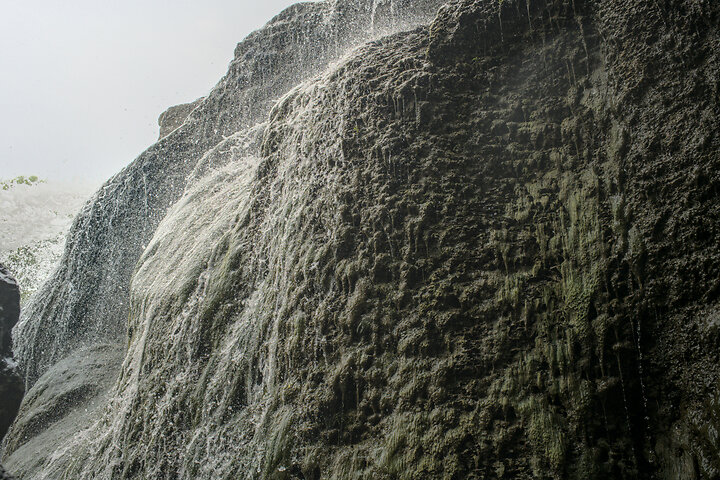


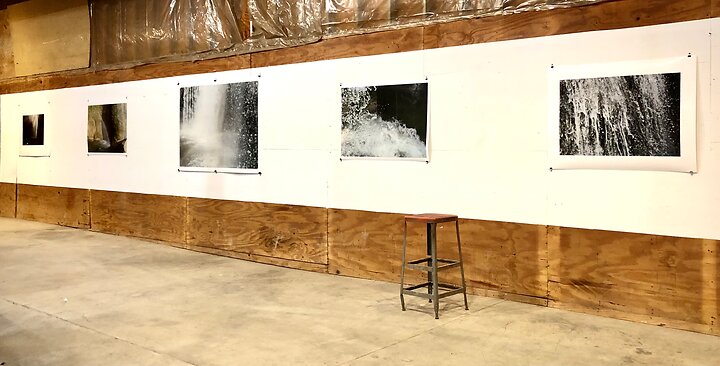
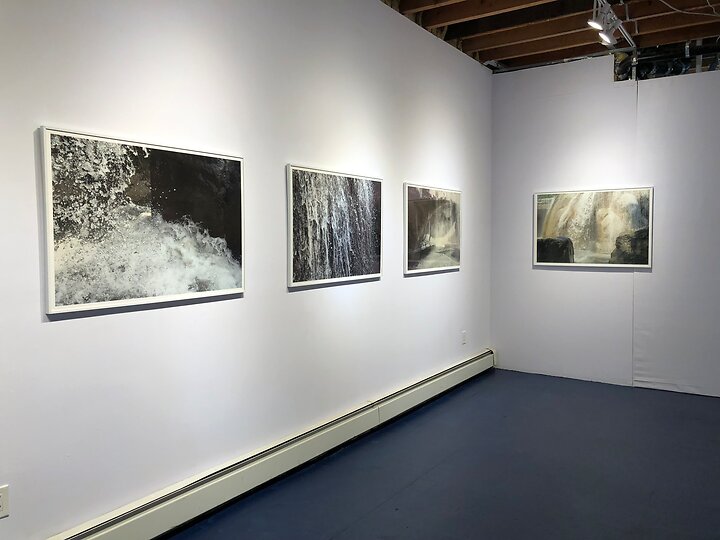
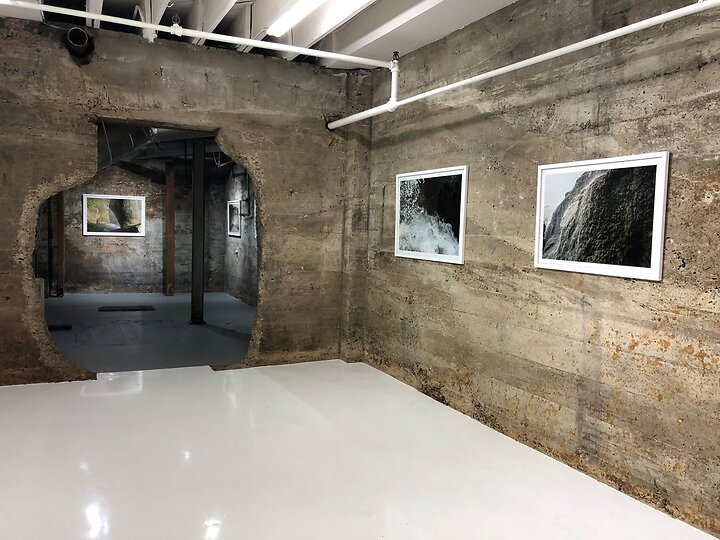
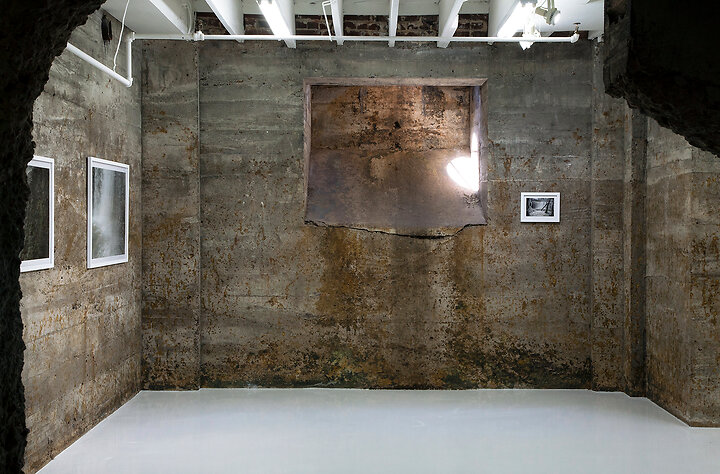
As I worked out how to make prints, I showed five of these images at The Soil Factory (Ithaca, NY) at the start of 2023. Then, in March 2023, I showed eight large prints in a show called Three Rainbows at Tomato Mouse (Brooklyn, NY). In April 2023 I showed yet more prints in the show Falling Water at Tops Gallery (Memphis, TN).
Below is an excerpt from the press release from the Tops Gallery press release, which is heavily indebted to the press release for the Tomato Mouse show. A good bit of the text of the Tomato Mouse show comes from Rebecca Bird, who runs that space.
In the last few years, Dan Torop has made repeated visits to places where there is either too much or too little water. One such site is a waterfall behind a playground in upstate New York. In a place both deluged and water-starved, sustained seasonal observation allows for telling images.
These flows of water—their absence and presence—present a revelatory landscape. An image of a torrent pitching itself over a cliff, a rendering of spray and rainbow—these are sites of dreams. They become similes: for aging, for the irrevocable, for entropy, irrationality, and wonder. Water, in its flow, makes known the underlying structures, but also obscures. These flows of images both veil and reveal. The land resists, denies, and transforms.
Proximity with powerful flows of water endangers the objective position, compelling awareness of a body bearing the transparent eyeball. Working around the rapid change of rushing water entails risk. Sporadic melts and violent flows are possible cataclysms. Freezing violent motion holds back trauma, recording a moment in the immeasurable field of constant motion.
In these photographs, the language of American landscape photography is simultaneously advanced and cast into doubt. Where once the landscape was something tangible that could be captured precisely, now the real world is no longer so solid. Change manifests on the land. Observation opens up a space not forward, but between. The age of exploration is gone. The ground beneath our feet remains unknown.
The water pouring down the bulky rock in Torop’s photograph Two Boulders renders white. A Hollywood tale tells that, during the eponymous dance in Singin’ in the Rain, the spray from above didn’t read on camera. The stagehands turned to a vaudeville standby. And so Kelly was pelted with milk as he swung on that lamppost, and rivulets of milk streamed down past the curb and cobblestones to the drains.
The droplets in Torop’s images are reminiscent of shattered glass falling in a movie by the Wachowskis. Think of the crown of milk photographed by Doc Edgerton in a moment more finely sliced than our eyes can perceive. Edgerton had already founded EG&G, the defense contractor which took on not just the photography but the entire management of the Nevada Test Site. In Torop’s work, radiance bursts through to form rainbows.
Photographers find the lasting in the flurry of the moment. The investigation and habitation of sites is the work. The resulting images are manifestations of experience. They are guideposts for both perceiving and imagining our veering world.
In May of 2023, Chantal Thomas interviewed me about this work for her show The Scene on WRFI (Ithaca, NY).